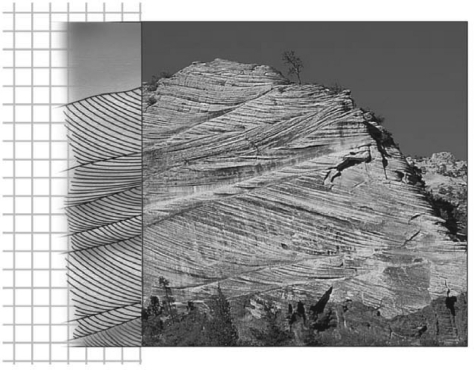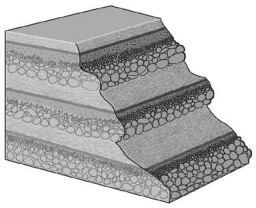A) was once covered in wet mud
B) was once covered by a glacier
C) has been subjected to a major climate change event
D) was the site of a mass extinction event
F) All of the above
Correct Answer

verified
Correct Answer
verified
Multiple Choice
Cemented shells of marine organisms form which kind of sedimentary rock?
A) biochemical
B) chemical
C) clastic
D) organic
F) B) and C)
Correct Answer

verified
Correct Answer
verified
Multiple Choice
Death Valley is currently sinking partly due to the weight of continuously accumulating sediment shed from the mountains that border the valley.What phenomenon is this an example of and what depositional environment is created by the sediment deposition?
A) regression and deltas
B) subsidence and deltas
C) regression and alluvial fans
D) subsidence and alluvial fans
F) B) and D)
Correct Answer

verified
Correct Answer
verified
Multiple Choice
A clastic rock composed of sand-sized grains derived from the physical weathering of granite and containing a sizable proportion of feldspar is termed ________.
A) metasandstone
B) lithosandstone
C) wacke
D) arkose
F) None of the above
Correct Answer

verified
Correct Answer
verified
Multiple Choice
It is unusual for ________ to carry grains larger than sand.
A) ice in glaciers
B) water in rivers
C) wind
D) water at a seaside beach
F) B) and C)
Correct Answer

verified
Correct Answer
verified
Multiple Choice
Limestone is most likely formed in which of the following environments?
A) shallow-marine clastic
B) shallow-marine carbonate
C) marine delta
D) deep marine
F) All of the above
Correct Answer

verified
Correct Answer
verified
Multiple Choice
Consult the figure below.Here,distinct internal laminations are inclined at an angle to the boundary of the main sedimentary layers.This is termed ________. 
A) graded beds
B) cross beds
C) horizontal beds
D) tilted beds
F) None of the above
Correct Answer

verified
Correct Answer
verified
Multiple Choice
The image below shows a series of graded beds.How many graded beds are shown? 
A) 1
B) 3
C) 12
D) 15
F) A) and C)
Correct Answer

verified
Correct Answer
verified
Multiple Choice
Stratification refers to ________.
A) the development of layering within sedimentary rocks
B) the act of deposition of sediment that will ultimately form sedimentary rock
C) physical and chemical alterations,including compaction and cementation,that occur as sediment is transformed into rock
D) the process of breaking down a source rock into smaller pieces called grains
F) A) and B)
Correct Answer

verified
Correct Answer
verified
Multiple Choice
The sedimentary rocks breccia and conglomerate most commonly form in a ________ environment.
A) beach
B) lake
C) mountain stream
D) deep-ocean basin
F) B) and D)
Correct Answer

verified
Correct Answer
verified
Multiple Choice
The primary difference between breccia and conglomerate is that conglomerate ________.
A) is finer grained than breccia
B) is coarser grained than breccia
C) possesses more angular grains than breccia
D) possesses more rounded grains than breccia
F) A) and B)
Correct Answer

verified
Correct Answer
verified
Multiple Choice
What is the difference between the formation of chalk versus chert?
A) They have different grain sizes.
B) They are made of different source materials.
C) Chalk is terrestrial;chert is marine.
D) Chalk is biochemical;chert is chemical.
F) A) and B)
Correct Answer

verified
Correct Answer
verified
Showing 41 - 52 of 52
Related Exams